The Jeep Cherokee XJ is an excellent all-around compact sport utility vehicle with a simple, boxy design and a strong and exceedingly durable engine. The XJ stands for eXperimental because it was revolutionary in design.
The XJ Cherokee is a compact sport utility vehicle that features two-door and four-door versions. It can accommodate 5 adult passengers and plenty of space for cargo. A gas engine, 2.5L or 4.0L, powers the XJ. The vehicle is a rear-wheel or all-wheel drive, depending on the model year.
The Cherokee XJ’s curb weight is 3,175 lb (1,330 kg) and has a maximum top speed of 103 mph (165 km/h). The Jeep XJ gets 15-20 mpg in the city and 20-23 mpg on the highway.
Read on to learn more about the Jeep Cherokee XJ’s specifications, pros, cons, and important maintenance tips.
About the Jeep Cherokee XJ
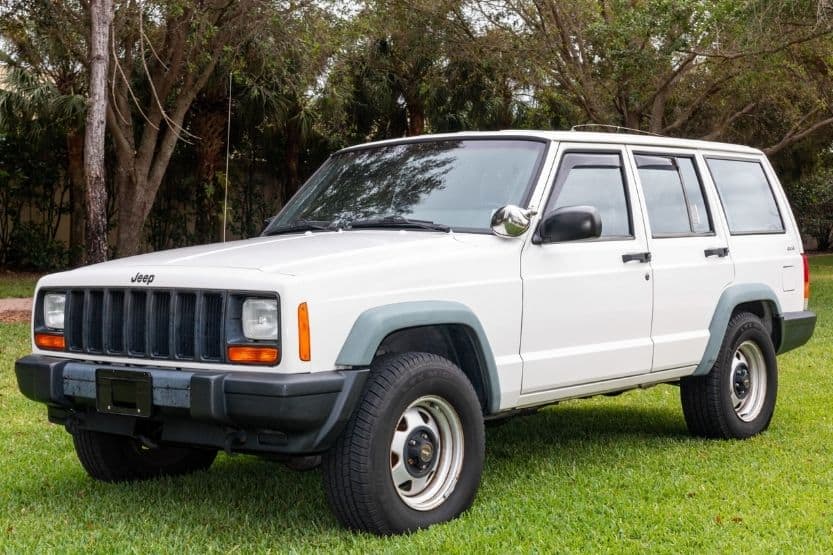
The Jeep Cherokee XJ is a sports utility vehicle with either a rear-wheel or all-wheel drive depending on the model. It comes in either two or four-door versions and can accommodate up to five adult passengers.
American Motors (AMC) manufactured the Jeep Cherokee XJ from 1984 to 1987. Chrysler then used the same design in the U.S., Argentina, China, Egypt, and Venezuela. Chrysler built around 3 million units between 1983 and 2001.
Eventually, the Jeep XJ went global through 2014. The company marketed them as sports wagons. Car enthusiasts consider the Jeeps as precursors to SUVs.
The Jeep Cherokee XJ gained popularity as one of the greatest vehicles at the time due to its incredible features:
- Durable engine
- Practical and excellent design
- Compact sport utility vehicle
- All-terrain capability
- Well-proportioned body
Up to this day, the Jeep Cherokee is considered one of the best compact sport utility vehicles. It became the basis of some Jeep models because of their durability and stable performance.
Jeep Cherokee XJ Specifications and Features
1. Engine
The Jeep XJ’s engine varied throughout the years. In 1987, Chrysler added a fuel injection system to the 4.0L inline-six engine. This set-up produced 190 hp and 225 lb-ft of torque.
From 1991 to 1999, Chrysler MPI used the 4.0L 16, OHV gasoline producing 190 hp at 4,600 rpm and 225 lb-ft of torque at 3,000 RPM.
Starting from 1997 to 2000, Chrysler also used the 2.5L 14, OHV gasoline that produces 125 hp at 5,400 rpm with 150 lb-ft of torque at 3,250 RPM.
From 1887 to 2001, the Jeep XJ also used a turbo-diesel 14, OHV engine with 114 hp at 3,900 rpm with 221 lb-ft of torque 2,00 RPM.
However, the most popular Cherokee Jeep engine is the AMC-produced 4.0L inline six-cylinder engine. American Motors built this original engine before Chrysler took over. The engine lasted from 1987 to 2001 and offered 177 hp and 231 lb-ft of torque. [1]
2. Dimensions
The Jeep features a wheelbase of 98.4 in (2,499 mm) in China, while the model produced in the U.S. is 101.4 inches (2,576 mm).
The dimensions vary slightly for each year’s model. The Jeep XJ’s length ranges from 165.3 (4,199 mm) to 169.2 in (4,298 mm)
The width ranges from 67.7 in (1,720 mm) to 70.9 in (1,793 mm), with the height ranging from 63.3 in (1,608 mm) to 66.9 in (1,699 mm).
Its curb weight is approximately 3,357 lb (1,523 kg).
3. Exterior
The Jeep Cherokee XJ was designed as an off-roader with a unibody. The unibody design fully integrates the body and frame for a seamless appearance. The boxy SUV shape is common to many Cherokee XJ jeeps.
4. Wheels and Tires
Both the front and rear steel wheels measure 15 (381 mm) x 7 (177.8 mm). Meanwhile, both the front and rear tires measure P215/75R15.
5. Drivetrain
The Jeep XJ’s drivetrain is a rear-wheel drive with a clutch size of 9.13 inches (231.90 mm). Take note that other models have all-wheel drive.
Its first gear ratio is (:1)3.93; the second gear ratio is (:1)2. The third gear ratio is (:1)1.35; the fourth gear ratio is (:1)1.00, and its fifth gear ratio is (:1)0.85. The final drive axle ratio is (:1)4.10.
The Jeep utilizes a 5-speed manual transmission with the isolated shift lever, mounted forward-synchro, and clutch starter interlock.
6. Suspension
The Jeep Cherokee XJ’s suspension type of the front is the Quadra-Link with coil springs, while the rear utilizes a solid axle with four leaf springs. Both suspensions feature rigid axles and have anti-roll bars with separate shock absorbers.
The Quadra-Link design finds the axle by using four leading control arms to control the lateral axis rotation. It controls the suspension’s longitudinal movement as well. The four leading control arms are found above and below the axle, two in each area.
Also, the track bar or Panhard rod locates the axle laterally. An anti-sway bar reduces body roll when your jeep turns on corners. Topping your axle housing are dual coil springs and two shock absorbers. These parts will ensure that your Cherokee absorbs the shock of ground impact.
7. Lighting
The Jeep XJ could use OEM lights, auxiliary bulbs, or LED lights. You will have to choose what is suitable for your traveled roads. You have to install the lights properly as well to ensure your safety.
8. Brakes
The Cherokee XJ’s braking system features drums at the rear and front vented discs.
9. Ignition
The ignition switch is the standard switch used in Cherokee vehicles. It is an alternate/OEM part number, such as 4664099, 4664100, and others. Its application is 4.0L 6 CYL EFI petrol.
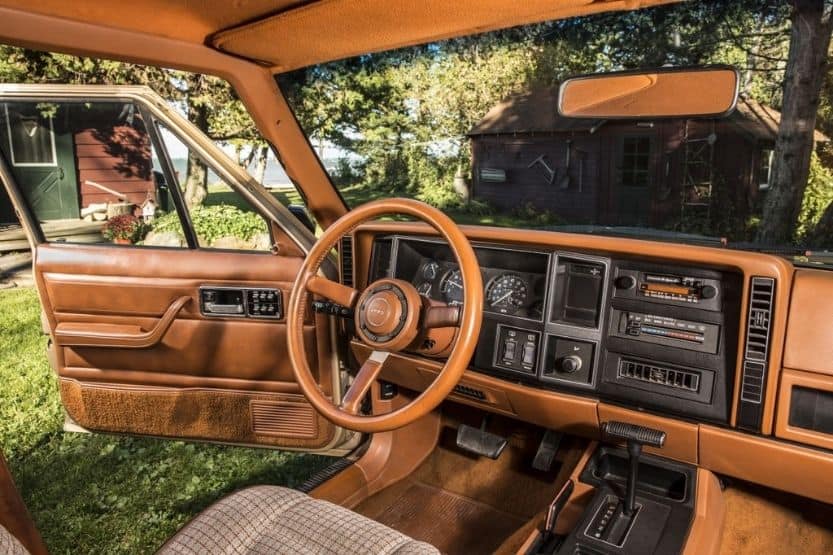
Your ignition switch must work efficiently. If your vehicle does not start properly, you will have to change the ignition switch immediately to prevent accidents.
10. Unique Features
Some of the unique features of the Jeep Cherokee XJ are:
- Apple CarPlay
- 7-inch touch screen
- Adaptive cruise control
- Remote start
- Proximity keyless entry
- Front and rear parking sensors
- Voice recognition
- Bluetooth and USB port
- Rearview camera
- HD radio
- Automatic emergency braking
- Forward collision warning
- Auto-dimming rearview mirror
- Rain-sensing windshield wipers
- Universal garage door opener
- Dual-pane panoramic sunroof
11. Top Speed of the Jeep Cherokee XJ
The Jeep XJ’s maximum top speed is 103 mph (165 km/h). It could run from 0 to 62 mph (100 km/h) in 13 seconds.
The below video is an excellent Jeep Cherokee XJ review including its various specs and features:
Pros and Cons of the Jeep XJ
Pros
1. Durable and Stable
You can be sure that the Jeep XJ is stable and durable. It has excellent stability in rough off-roads or paved on-roads. Unlike other vehicles, you can rely on your Jeep. Its practical design helps make it stable on the road.
2. Easy to Customize
You could easily customize your Jeep Cherokee XJ by adding or replacing features without encountering difficulties. Although there are a few expensive parts, most of the spare parts of the Jeep are cheap to purchase and easy to customize.
3. Easy to Maneuver
You will not have problems maneuvering your Jeep as they are easy to drive through narrow off-road trails or on wide on-roads. They are good on rough or paved roads as you can drive on these surfaces safely. Hence, they have an all-terrain capability.
4. One of the Best Off-Road Jeeps
The Jeep Cherokee XJ is one of the best off-road vehicles that can go on-road as well. You do not have to worry about having it damaged as it is sturdier. You could drive it during any weather conditions too.
5. Superb Infotainment System
New customized versions of the Jeep Cherokee XJ have a Uconnect infotainment system that is touchscreen responsive. You can keep yourself entertained with sounds while driving on the road. It has Bluetooth capability too.
6. Powerful Engine
The 4.0L engine is powerful yet easy to maintain and is the least demanding. Although it provides poor fuel economy, it is still a powerful engine in its category.
Cons
1. Smaller Cargo Space
The Jeep XJ’s cargo space is smaller than most jeeps from other brands. Nevertheless, if you want more space, you can opt for the bigger Grand Cherokee.
2. Poor Fuel Economy
Some owners reported that the Jeep XJ has poor fuel economy. Some interior parts have harder surfaces too that keeps the quality poor as compared to its rivals.
Jeep Cherokee XJ Cost
The Jeep Cherokee XJ’s manufacturer’s price ranges from $15,300 to $19,500. However, in the market, the best model’s starting price is $26 300 to $40,000.
You should canvass prices before deciding to buy your Jeep. Keep in mind that the most expensive Jeep is not always the best. The best Jeep for you should respond to your specific needs. Some not-so-pricey models give better performances.
Do not choose the cheapest, though, as it may require several repairs before you could drive it smoothly.
Jeep Cherokee XJ Reliability
The Jeep XJ has an average reliability score. The Jeep XJ’s engine is a powerful 4.0L with a 220 lb-ft of torque. You can rely on the Jeep to perform well for many years as long as it is well-maintained.
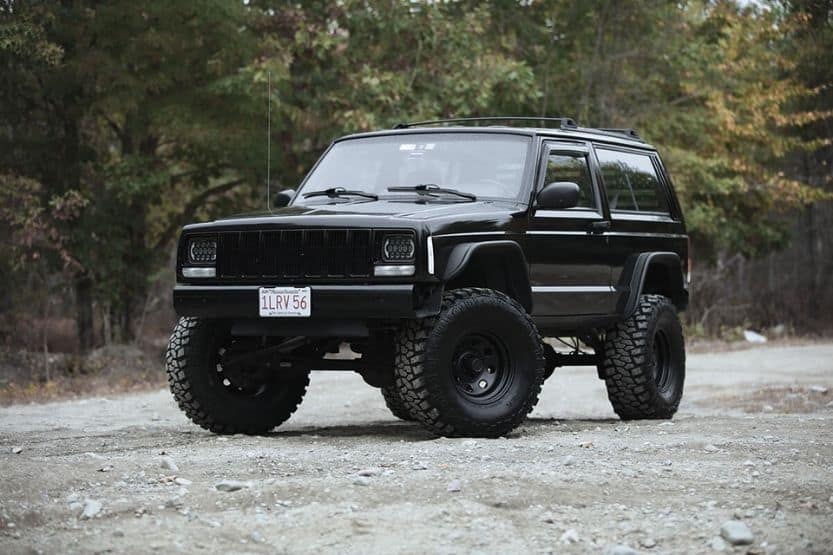
Even though some drivers gave the Jeep Cherokee XJ a 2/5 reliability score, many still believe it is reliable. One of the reasons is that it could provide you up to 300,000+ mileage. This data could demonstrate its reliability. Not many jeeps can go that far.
What Are Models of XJ That Are Considered the Best?
The best years for the Jeep Cherokee XJ model are from 1991 to 1996. Many drivers reported that these years provided better off-roading equipment and a better engine.
Is the Jeep Cherokee XJ a Good Vehicle?
Yes, the Jeep XJ is a good vehicle. If you want a good compact SUV, the Cherokee XJ has an outstanding off-roading capability. It is a popular vehicle as it is cost-effective and provides a perfect SUV with a simple but classic design.
Also, you can find Jeep parts almost everywhere. You will not have a tough time looking for spare parts. Hence, the parts are not as expensive as other classic vehicles.
Tips for Maintaining Your Jeep Cherokee XJ
1. Check the Front Brake Pads at Least Once a Year
You have to check the front brake pads regularly or at least once a year. You should replace the brake pads when they are less than two centimeters thick or less. One indication that your brake pads are worn out is a squeaking sound when you step on the brake pedal.
2. Replace the Rotors as Needed
Replace your rotor immediately if you find them damaged, worn thin, rusty, or if you discover grooves in them. The rotor must be smooth with no signs of damages.
3. Visit the Motor Shop as Recommended by the Manufacturer
If you want your Cherokee’s lifespan to last long, you have to take it to the motor shop for servicing as scheduled by your car dealer.
The Jeep may not show visible signs of damage, but sometimes minor damages do not show until they become major.
4. You Can Do the Minor Repairs Yourself
You should know your Jeep Cherokee well enough to perform minor repairs. These repairs could include filter change, brake pad replacement, and similar tasks.
5. Check All Jeep Fluids Often
You have to check all the jeep’s fluid before each travel. The fluids must be clean and sufficient enough to keep the vehicle going. Replace dirty fluids immediately and change dirty filters.
Likewise, double-check if you have placed a sufficient amount of fluid.
Conclusion – Jeep XJ
The Jeep Cherokee XJ was manufactured from 1983 to 2001. The XJ stands for “eXperimental.” The “experiment” worked because the Jeep style lasted for decades. It had a bespoke chassis for a more car-like performance with great off-roading capabilities.
The Jeep Cherokee XJ is one of the best two-door or four-door compact sport vehicles out there. It runs on a 2.5 and 4.0L gas engine. The jeep can accommodate as many as 5 passengers.
The Jeep XJ measures 58 inches (1473.2 mm) wide, 167.5 inches (4254.5 mm) long, and 63.9 inches (1623.06 mm) tall. It weighs 3,175 lb (1,330 kg) with a top speed of 103 mph (165 km/h). The wheelbase measures 101.4 inches (2575.56 mm) and has a gas mileage of 15-20 mpg City/20-23 mpg Hwy.
To help you maintain the Jeep Cherokee XJ properly, here is a summary of the tips:
- Check the front brake pads at least once a year
- Replace the rotors as needed
- Visit the motor shop as recommended by the manufacturer
- You can do the minor repairs yourself
- Check all jeep fluids often
Related reading:
Lifted Jeep Commander [Body, Suspension, and Recommended Kits]
Toyota FJ Cruiser Towing Capacity [How Much Weight Can It Tow?]

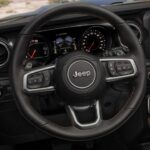
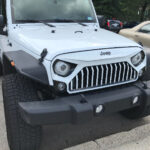
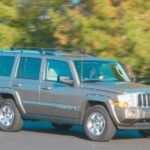
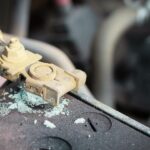
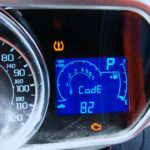
![Check Engine Light On and Off Intermittently [Causes and Fixes] check engine light on and off](https://roadsumo.com/wp-content/uploads/2021/06/check-engine-light-on-and-off-150x150.jpg)

![Read more about the article Minivans with Stowable Seats [Top 9 Minivans]](https://roadsumo.com/wp-content/uploads/2021/08/minivans-with-stowable-seats-300x200.jpg)